
Poland history & facts in brief
Krakow
Excerpted from Wikipedia, the free encyclopedia.
Cracow or Krakow (Polish: Kraków, in full Royal
Capital City of Kraków; Polish: Królewskie
Stoleczne Miasto Kraków, see also Cities
alternative names; in Hungarian Krakkó)
is one of the oldest and largest cities of
Poland, with a population of 760,000 (as of 2004)
- agglomeration 1.2 million. This historic city
is situated on the Vistula (Wisla) River at the
foot of Wawel Hill in the southerly
region of Little Poland (Malopolska).
It is the capital of the Lesser Poland
Voivodship (województwo malopolskie) (since 1999);
previously it was the capital of
Kraków Voivodship (since the 14th century).
Kraków has traditionally been one of the
leading scientific, cultural and artistic
centres of the country.
It was once the national capital and is
considered by many to still be the heart
of Poland, due to its history of more
than a thousand years.
Kraków is also a major centre of local and
international tourism, with more
than two million visitors annually.
Voivodship: Lesser Poland
Municipal government: Rada miasta Kraków
Area: 326,8 km˛
Population:
- city 757,500 (2004 est.)
- urban 1,200,000
- density 2317.93/km˛
Founded: 8th century
City rights: 1257
Area code: +48 12
Car plates: KR
Twin towns: Bordeaux, Bratislava, Curitiba,
Cuzco, Edinburgh, Fes, Florence, Frankfurt,
Gothenburg, Innsbruck, Kyiv, La Serena, Leipzig,
Leuven, Lviv, Milan, Nuremberg, Orléans,
Pecs, Rochester, Seville, Solothurn,
Vilnius, Zagreb
Municipal Website:
(http://www.krakow.pl/)
Landmarks
The old city of Kraków has a rich architecture,
mostly Renaissance with some examples of
Baroque and Gothic.
Kraków's palaces, churches and mansions
display a richness of color, architectural
details, stained glass, paintings,
sculptures, and furnishings.
Among the most notable of the city's hundreds of historic
buildings are: the Royal Castle and Cathedral on Wawel
Hill, where King John III Sobieski is buried; the medieval
Old Town with its beautiful square; Market Square (200
meters on a side); dozens of old churches and museums;
the 14th century buildings of the Jagiellonian University;
as well as Kazimierz, the historical centre of Kraków's
Jewish religious and social life. The Gothic St Mary's
Church stands by the market place. It was built in the
14th century, and its famous wooden altar was carbed
by Veit Stoss. Every hour, a trumpet call called the
hejnal is sounded from the church's main tower.
Kraków hosts many annual artistic events, including some of
international significance, such as the festival of
Short Feature Films, Biennial of Graphics.
The oldest parts of Kraków, united in late 18th century
are: Old Town (Stare Miasto) - the area once contained
within the city walls, now encircled by a park known
as Planty Wawel - a limestone hill south of the Old
Town, the site of the Royal Castle and the cathedral
Stradom and Kazimierz - south of Wawel; the latter was
once divided into Christian and Jewish quarters Kleparz
- north of the Old Town Areas added in the 19th and
20th centuries include: Podgórze - built across the
Vistula by the Austrians in the 19th century Nowa Huta
- built east of Kraków by the Communist regime after
the Second World War.
History
The earliest known settlement on the
present site of Kraków was established
on Wawel hill, and dates back to the 4th century.
Legend attributes the town's establishment to the mythical
ruler Krak, who built it above a cave occupied by a
ravenous dragon. Before the Polish state existed, Kraków
was the capital of the tribe of the Vistulians, probably
linked to the larger part of Greater Moravia.
Kraków's first appearance in historical records
dates back to the 8th century, and notes that
the prince of the Vistulians was baptized.
The first mention of the name dates to
966, when Abraham ben Jacob mentioned it as a notable
commercial centre.
After Greater Moravia was destroyed,
Kraków became part of the kingdom
of Bohemia.
By the end of the 10th century, the city
was a major center of trade.
Around this time, it was
incorporated into the holdings of the
Piast dynasty of Poland.
Several brick buildings were also constructed,
including a castle, Romanesque churches, a cathedral,
a basilica, and the St. Felix and Adaukt Church.
In 1038, Kraków became the seat of the Polish government.
Two hundred years later, it was almost entirely destroyed
in the Tatar invasions.
In 1257, the city was rebuilt, in a form
which has remained practically unaltered, and received
city rights under Magdeburg Law.
1311 saw a rebellion agaist Wladislaus I of Poland.
Rebellion was organised by Albert and consisted mostly
of German-speaking citizens in Kraków.
The rebellion cost Poland the city of Gdansk, which
was taken by the Teutonic Orders, but German-speakers
lost their political ambitions and began to Polonize.
Kraków rose to new prominence in 1364, when
Casimir III of Poland founded the University of
Kraków, the second in central Europe
after the University of Prague.
There had been a cathedral school under the auspices
of the city's bishop since 1150.
The city continued to grow under the Lithuanian
Jagiello dynasty (1386-1572), which maintained close
connections to the imperial house of Habsburg of the
Holy Roman Empire.
As the capital of a powerful state, it became a
flourishing center of science and the arts.
Many works of Renaissance art and architecture were
created here during that time.
In 1475 delegates of
the elector George the Rich of Bavaria came to Kraków
to negotiate the marriage of Hedwig, the daughter of
King Casimir IV Jagiello to George the Rich.
Hedwig traveled for two months to Landshut in Bavaria,
where an elaborate marriage celebration, the
Landshut Wedding (Landshuter Hochzeit) took place.
In 1572, the king Sigismund II died childless, and the
throne passed to Sigismund III of the Swedish House
of Vasa.
Kraków's importance began to decline, accelerated
by the pillaging of the city during the Swedish invasion,
and an outbreak of plague that left 20,000 of the city's
residents dead.
Sigismund III moved his capital to Warsaw
in 1596.
After the partition of Poland In the
late 18th century, the weakened Polish state was absorbed
by its more politically vigorous neighbors, Russia,
Austria, and Prussia.
Kraków became part of the Austrian
province of Galicia.
Tadeusz Kosciuszko initiated a
revolt, the Kosciuszko insurrection, in Kraków's market
in 1794.
The Prussian army put down the revolt, and
looted Polish royal treasure kept in the city. When
Napoleon Bonaparte of the French Empire captured what
had once been Poland, he established the Duchy of Warsaw
(1809) as an independent but subordinate state.
The Congress of Vienna (1815) restored the partition of
Poland, but gave Kraków its independence, as the Free
City of Kraków.
The city again became the focus of a
struggle for national sovereignty in 1846, during the
Kraków Uprising.
The uprising failed to spread outside
the city to other Polish-inhabited lands, and was put
down, resulting in Kraków's annexation by Austria.
After the Austro-Prussian War of 1866,
Austria granted autonomy
to Galicia, making Polish a language of government and
establishing a provincial diet.
As this form of Austrian
rule was more benevolent than that exercised by Russia
and Prussia, Kraków became a Polish national symbol
and a center of culture and art.
20th century During the First World War, Kraków Legions
led by Jozef Pilsudski set out to fight for the liberation
of Poland, in alliance with Austrian and German troops.
The Austrians and Germans lost the war, but the terms
of the Treaty of Versailles (1919) established the first
sovereign Polish state in over a century.
Poland was
partitioned again in 1939, at the outset of the Second
World War, and Nazi German forces entered Kraków in
September of that year.
It became the capital of the
General Government, a colonial authority under the leadership
of Hans Frank.
The occupation took a heavy toll, particularly
on the city's cultural heritage.
Kraków's population
has quadrupled since the end of the war, and it is still
regarded as the cultural capital of Poland.
In 1978, UNESCO placed Kraków on the list
of World Heritage Sites.
Education
Kraków is home to several major
state universities and several dozen other schools of
higher education. It is also home to Jagiellonian University,
the first Polish university and one of the oldest and
most prominent universities in Central Europe. Apart
from the local population, the schools of Kraków provide
education for inhabitants of the region of Southern
Poland.
Culture
Kraków is considered by many to be
Poland's capital of culture.
The city boasts one of the best museums in the country
and some famous theaters. It counts two Nobel Prize
winners in literature among its residents (Wislawa Szymborska
and Czeslaw Milosz). It is also home to one of the world's
oldest and most distinguished universities. Kraków was
named a European City of Culture in 2000.
External links

This page was retrieved and condensed from
(http://en.wikipedia.org/wiki/Krakow) July, 2005
All text is available under the terms of the GNU Free
Documentation License
(see
Copyrights for details).

Hui Chin and I visited
Krakow during our 2005 trip in Europe.
We have really enjoyed the ambience of Krakow.
While in Krakow we taken time out to take a train to visit
Oswicim or as it is better known probably Auswitz, the infamous
concentration or death camp of WWII.

Some of my photos of Krakow.
You can click on
these photos for an enlargement
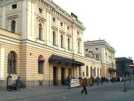 |
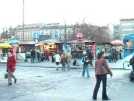 |
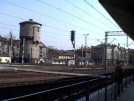 |
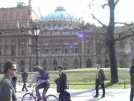 |
| Krakow |
Krakow |
Krakow |
Krakow |
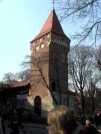 |
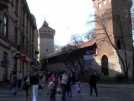 |
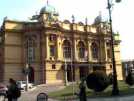 |
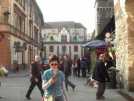 |
| Krakow |
Krakow |
Krakow |
Krakow |
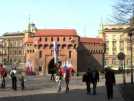 |
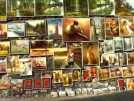 |
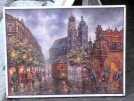 |
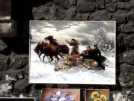 |
| Krakow |
Krakow |
Krakow |
Krakow |
 |
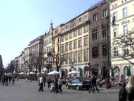 |
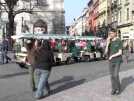 |
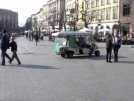 |
| Krakow |
Krakow |
Krakow |
Krakow |
 |
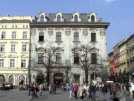 |
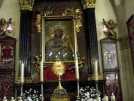 |
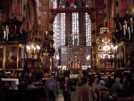 |
| Krakow |
Krakow |
Krakow |
Krakow |
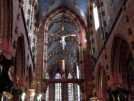 |
 |
 |
 |
| Krakow |
Krakow |
Krakow |
Krakow |
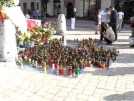 |
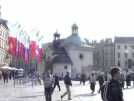 |
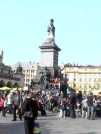 |
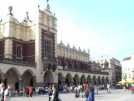 |
| Krakow |
Krakow |
Krakow |
Krakow |
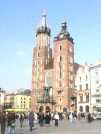 |
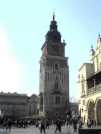 |
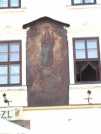 |
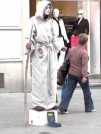 |
| Krakow |
Krakow |
Krakow |
Krakow |
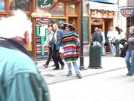 |
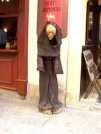 |
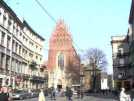 |
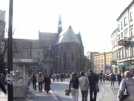 |
| Krakow |
Krakow |
Krakow |
Krakow |
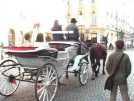 |
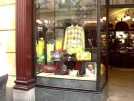 |
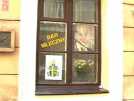 |
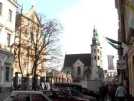 |
| Krakow |
Krakow |
Krakow |
Krakow |
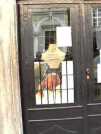 |
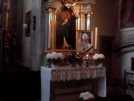 |
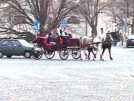 |
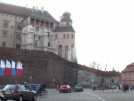 |
| Krakow |
Krakow |
Krakow |
Krakow |
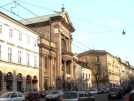 |
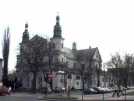 |
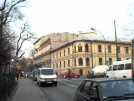 |
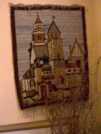 |
Krakow busess
 |
| Krakow trains |
Krakow trams
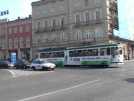 |
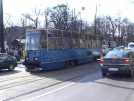 |
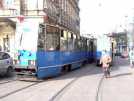 |
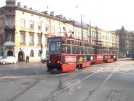 |
| Krakow trams |
Krakow trams |
Krakow trams |
Krakow trams |
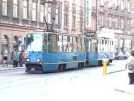 |
 |
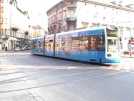 |
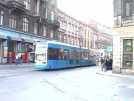 |
| Krakow trams |
Krakow trams |
Krakow trams |
Krakow trams |

Site
Index
Back to Top
Photos Index
Thanks for coming, I hope you
have enjoyed it, will recommend
it to your friends, and will come
back later to see my site developing
and expanding.
I'm trying to make my pages
enjoyable and trouble free for everyone,
please let me know of any mistakes
or trouble with links, so I can
fix any problem as soon as possible.
These pages are best viewed with monitor
resolution set at 640x480 and kept simple
on purpose so everyone can enjoy them
across all media and platforms.
Thank you.
You can e-mail me at
Webmaster

|